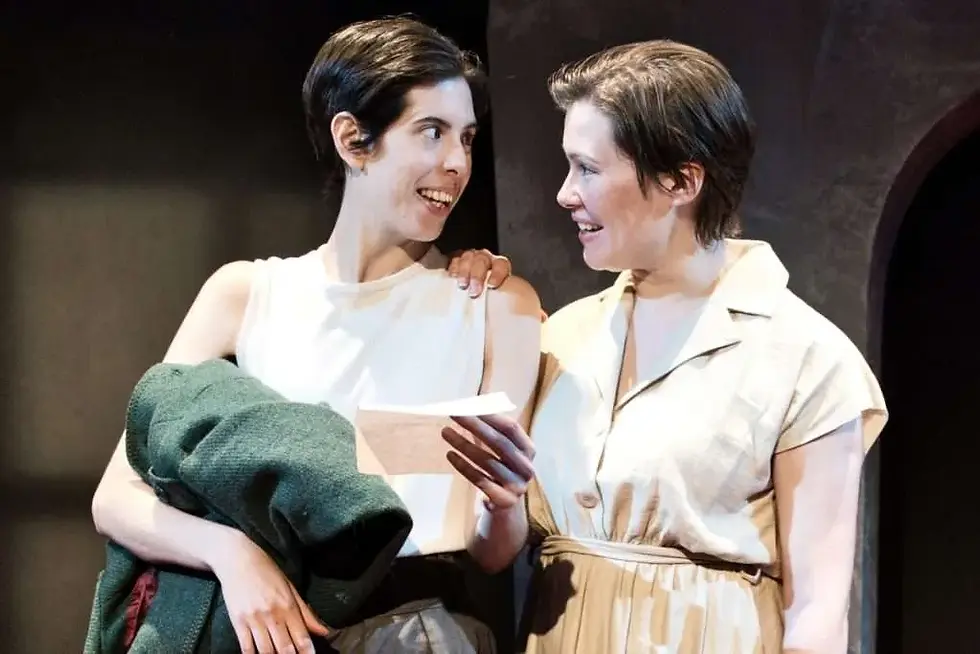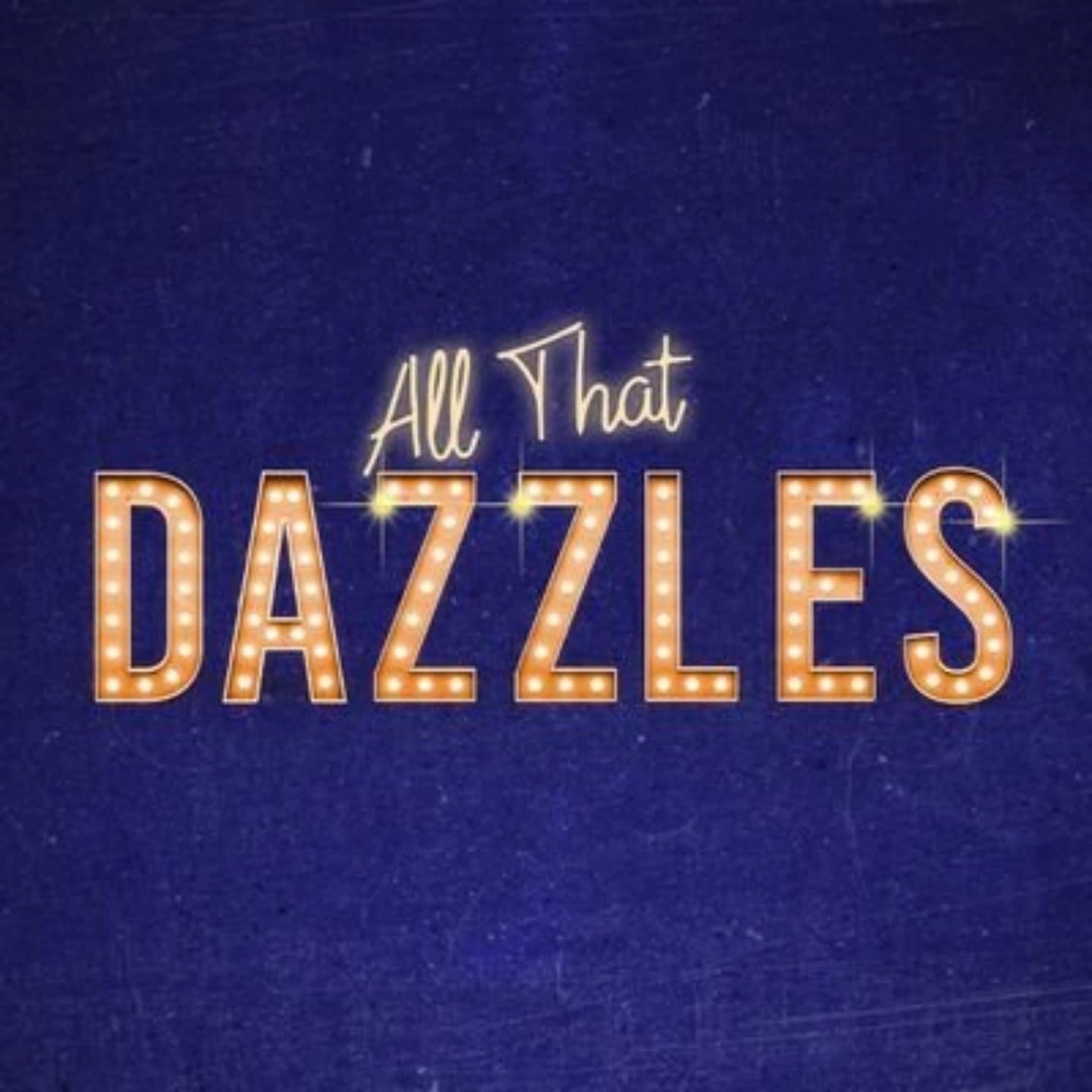Review: Who Is Claude Cahun? (Southwark Playhouse Borough)
- Dan Sinclair
- Jun 23
- 4 min read
Review by Dan Sinclair
⭐️⭐️
The bottom of the programme reads: But what is your identity as a Jewish lesbian in Nazi occupied Jersey? I can tell you all about Queen Elizabeths hair, the history of milk pasteurisation and Dick Turpin, or as I like to call them, the big three, but Vichy France and WW2 Jersey is a topic that is seldom discussed in the United Kingdom. An island of intense resistance, it also faced severe oppression under the Nazi occupation. Deportations, strict martial law and the site of a concentration camp on the British isles. And on this island lived the often forgotten surrealist artist, Claude Cahun.
Who Is Claude Cahun takes us through the life of the enigmatic titular writer, performer and resistance fighter. From their troubled childhood, to their work in Paris with André Breton and other early surrealist artists, to their relationship with sister-in-law/lover/photographer, Marcel Moore. After the early stuff is handled, the bulk of the play takes place in the home of Claude and Marcel as they try to remain undercover in Nazi occupied Jersey. Creating subversive art and dotting messages across the island (coins, German graves, churches, cigarette papers, defaced magazines), they convince German soldiers to abandon the fight. Whilst exploring their queerness and evading detection by the Gestapo, it presents us with fascinating subject material and shows Claude Cahun, in their dogged resistance, to be a true artist for our times.

Claude Cahun has had a monumental impact on our cultural discussion of gender and androgyny, seen as a prototype of our modern understanding of transgender identities and queerness, they have been highlighted by countless artists, photographers, designers, and even David Bowie. Yet I struggled to see how this new play by D.R Hill engaged with the queerness and, importantly, transfeminity of Claude Cahun. There were attempts, sure, with a handful of lines about wearing masks, or playing with identities, but there was - somewhat ironically in a play with such a run time - no time to have this explored between Claude and Marcel. Instead, opting to race ahead with the general story of their resistance work.
I find it puzzling how the script fell into so many traps and how director David Furlong didn’t spot them. Dialogue was almost entirely expositional, and when not, it seemed to repeat over and over the same phrases as if that would grant them any meaning. Just because you practically verbatim say that this is about finding identity, that does not make it so. Whilst the script circled round and round, failing to land, this inevitably led to a runtime that began to feel exhausting. For me, it all got a bit too much when at the end, the characters all came forward in a line to simply narrate and here’s what happened after our story finished, straight from the ending credits of a Netflix Original Documentary. Why do we need to know this?

The usage of surrealism as a style was immensely enjoyable when it was applied: avant-garde piano, strange movements, pulsing lights, all-encompassing projections of faces, grinning and laughing, all teeth. Very Charlie and the Chocolate Factory 1971 boat going through a scary tunnel coded. And the play came alive! I simply wanted so much more of this; it was thrilling, design from Juliette Demoulin had a chance to be bold and Jeffrey Choy's visuals gave you a glimpse into the art being performed in 1930's Paris.
Unfortunately, in the titular role of Claude Cahun, Rivkah Bunker failed to grab me, perhaps a fault with the material, their tortured artist often just left me frustrated. The dynamic between them and their lover, Marcel, portrayed by Amelia Armande, was lacking in passion. We never saw them happy together, simply they spent the majority of the runtime narrating the exact action we’re seeing them do. And now we shall make a poster, and now you shall take my photo. There was no spark to keep their romance a) alive and b) believable.

The character of Captain Boden, a senior ranking Nazi on the island left me uneasy, becoming a key figure in the final 30 minutes of the play. A sympathetic figure who seems to want to spare Marcel and Claude (after they are caught), as Marcel reminds him of his sister, or perhaps because he doesn’t want an uprising on the island. It’s unclear. And whilst Ben Bela Böhm tries to work with the material, he is often left with lines that are about as on the nose as a nostril. The rest of the cast similarly struggle, with many scenes unfortunately having a twinge of Allo Allo about them. Always dramatic, always trying to be profound, it was practically impossible to engage with any of the characters and see them as anything other than archetypes: the angry Gestapo officer, the nosy neighbour, the gossipy shopkeeper.

Attempting to tell the entire story of Cahun’s life left the production feeling like a long Wikipedia article, void of any feeling or insight. This was even reflected in the design, with dates and locations projected for every single scene, alongside real-life photography of Claude Cahun, replicating moments exactly. And to get these snapshots, we were often stuck with prolonged on-stage costume changes with no dialogue, simply waiting for Cahun to get into costume so they can take the photo and show you that they’ve recreated a fascinating piece of art, before then taking it off again.
But what is your identity as a Jewish lesbian in Nazi occupied Jersey? I find myself scratching my head over what this production actually said about queerness and Jewish identity, beyond saying that Claude Cahun was a member of both groups. What does it mean to be a lesbian and non-binary? What is the experience of being Jewish and being trapped on an island that has an active concentration camp? This production sadly gave me no answers. After two hours in their company, I am still left with the question, who is Claude Cahun?
Who Is Claude Cahun? is playing at Southwark Playhouse Borough until 12th July.
Photos by Paddy Gormley











